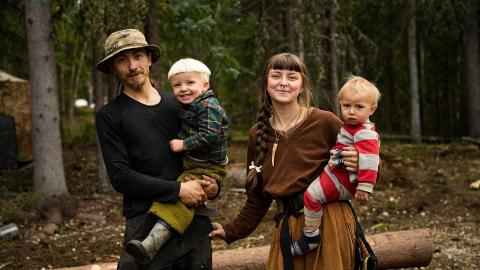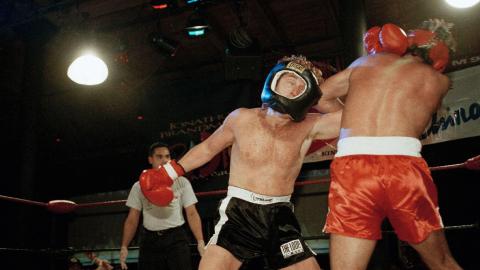Crime and Water
The Strip in Las Vegas, would be just a street in the desert were it not for the gangsters.
Thaddeus Russell
The gangster 'Bugsy' is popularly credited for making the modern Las Vegas but it's arguably hotelier Thomas Hull because he opened the first casino hotel in 1941. It's his hotel that attracts the nearby Hollywood stars to holiday in Sin City. And it's this that draws mobster Benjamin 'Bugsy' Siegel.
Funded by East Coast mob money, his $6 million Flamingo casino hotel opens in 1946. Its flashing neon signs fail to make profits immediately (or Bugsy is skimming the profits off) leading to Bugsy being mown down at his mistress's mansion. The story of his death makes international headlines and the publicity attracts waves of visitors. Bugsy in death had given life to the second boom of Las Vegas. Ten years later, the Dunes hotel makes national headlines again by debuting bare-breasted showgirls.
The fabulous 1950s see the Mafia used as much as a tourist attraction as a basis for federal investigations. Frank Sinatra and his Rat Pack make the city world famous but performers such as Sammy Davis Jr still have to deal with the reality of segregation. He may be warmly received on stage, but he's only allowed to enter the casino-hotels through the kitchens. After 1960, the NAACP secures desegregation.
In the 1960s, the authorities try to clean out the corruption from the casinos. The arrival of the eccentric billionaire Howard Hughes briefly distracts everyone when he moves into the Desert Inn hotel in 1966. Unwilling to leave, he buys the entire hotel and several others. (He also buys the local TV station so as to influence their late night movies).
But Sin City is losing its allure and simply becoming seedy. The 1973 opening of the $106 million MGM Grand megaresort is an attempt to attract back the rapidly dwindling tourist numbers. And isn't until Steve Wynn opens the Mirage in 1989, that the fortunes of Las Vegas really recover. Boasting tropical aquariums, waterfalls and a rainforest, building and maintenance costs mean that it has to make a million dollars a day. And the fact that it does leads to another building boom. It is Wynn again who tops them all by creating the $1.6 billion Bellagio in 1998.
BACK TO THE BEGINNING
And then, in 2007, on the original Native American site, the Springs Reserve opens. 'One of the most beautiful and inspiring places in the US' it shows both the history of the area and, in show-casing sustainable indigenous plants, its only viable future. After the near catastrophic drought of 2002, Nevada can no longer trade with other states for water. The US's largest reservoir, Lake Mead, which supplies Las Vegas goes below 40% capacity in 2010. But historian Simon Schama puts his faith in Pat Mulroy who runs the South Nevada Water Authority. She has targeted 'two of the most sacred spaces in American life: the golf course and the lawn' as 70% of Southern Californian water use goes on grounds like these and is irrecoverably lost. She has given incentives to replace areas with plants that are indigenous to the area and which require less water. With even the 'recession proof' Las Vegas experiencing a drop in revenue and visitors during the credit crunch, big changes are coming to the meadows.
Did you know?
Las Vegans used to party in the shadow of nuclear mushroom clouds during the 1950s when the Nevada test site, just 65 miles northwest of the city, saw over 900 explosions. According to the 'Lonely Planet' guide to the area, the city even used the testing as a tourist attraction by selling 'atomburgers'.
















